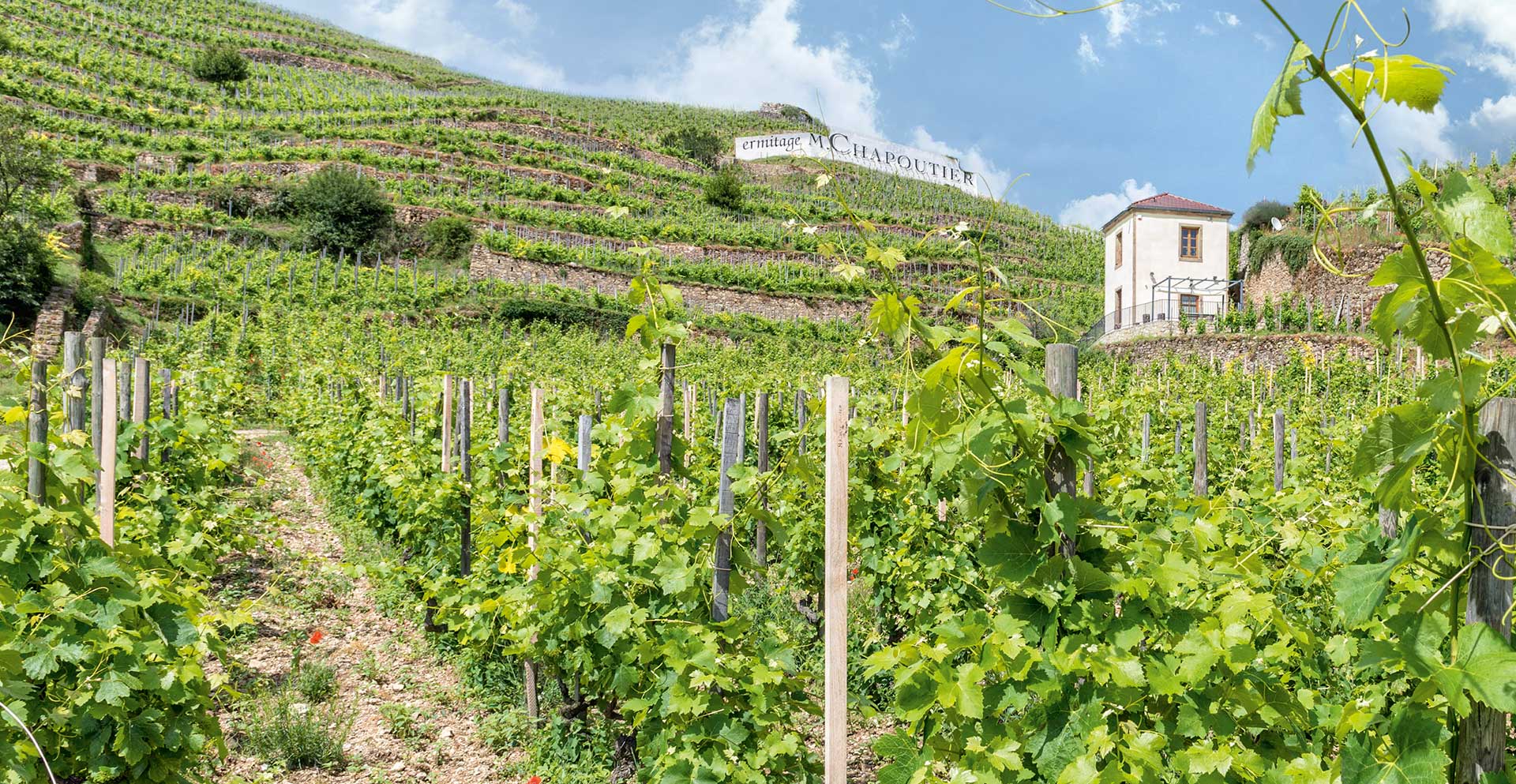Rhone Valley 2021 wine harvest : a return to the standards
In the vineyard
14 February 2022
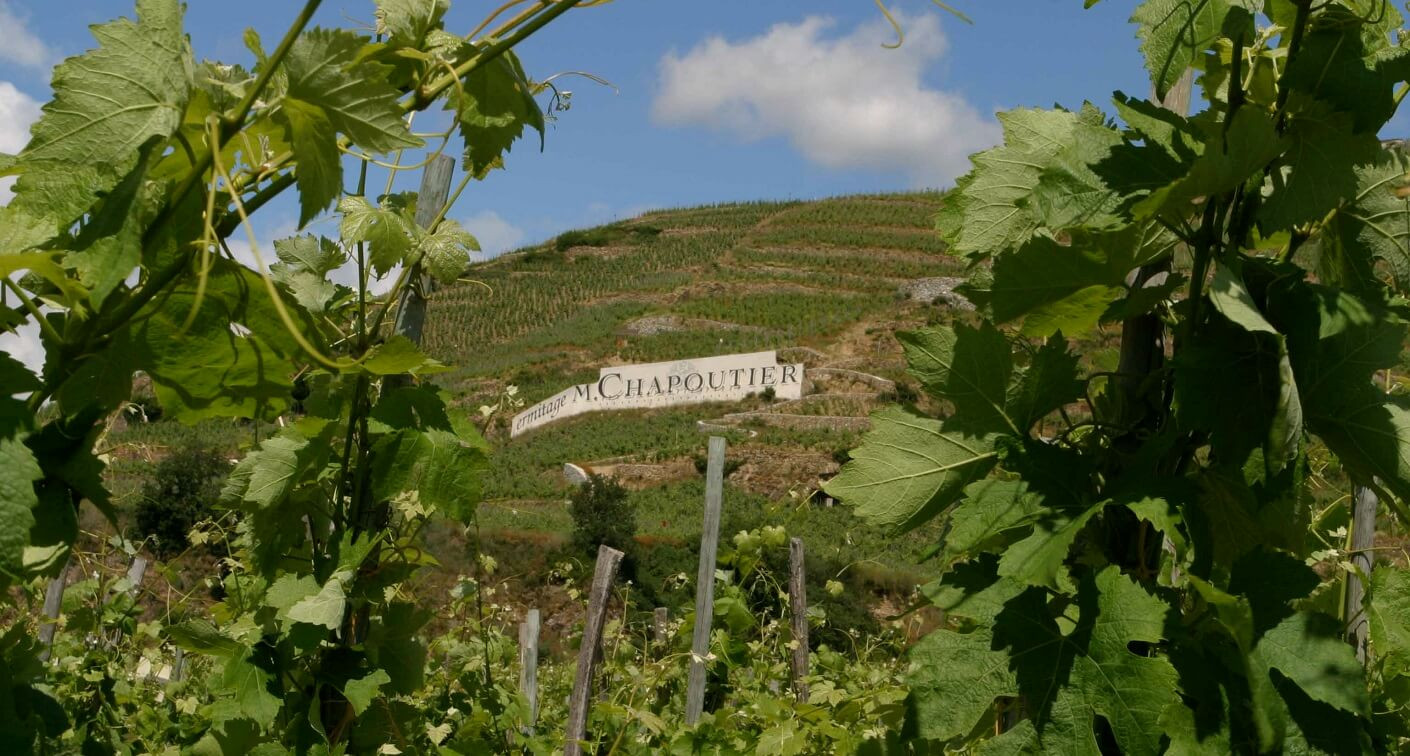
A return to the standards after an elusive wine season. After 5 hot – sometimes scorching – years, and marked by exceptionally early growth like in 2020, 2021 will leave an indelible mark in winegrowers’ hearts. In spite of a chaotic season, the workers’ labours produced a vintage with almost-forgotten characteristics. Post-harvest, the fine balance of the Ermitage whites gives us wines of great minerality and the elegance of the Syrahs reminds us of a proper Northern Rhone Valley vintage.
On January 18th, we were ready to start pruning... but then the snow started to fall on Hermitage. The operation was postponed for a few days, without knowing at the time that this would be beneficial as the season wore on.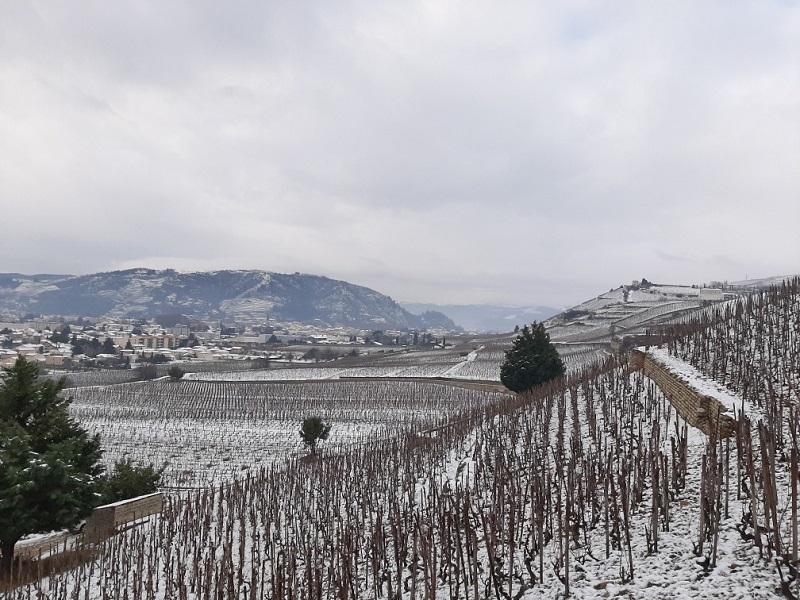
At the beginning of February, after several days’ bright sunshine, progress is good on the pruning front. The plains that are most sensitive to white frost are done last, followed by treating of the wounds with our biodynamic concoction. This winter is nevertheless marked by low rainfall and a relatively mild climate. All this causes worry about a very hot, dry year. All the more so as in the Southern Rhone Valley, barely 100mm of rain will be recorded during the first quarter. On March 25th, the budburst started on all the Domaines, with the buds coming seeping out of their cottony cocoon on Hermitage and Côte-Rôtie, revealing the first leaves on the sectors that have warmed up nicely. To date, we are one week behind the 2020 vintage.
On the eve of Easter weekend, a cold snap is forecast for France, and negative temperatures expected in the Rhone Valley. On Friday, April 3rd, we can’t just sit around doing nothing, so we start looking for emergency solutions for warming up the atmosphere. On Tuesday April 7th, we set up candles on the hillsides and build wood braseros, hoping against hope that they wouldn’t be needed. In the night of April 7-8th, at 11pm, it is already 0°C degrees. We wait a little longer before lighting up, but we have no choice. The weather stations start to panic and send texts to our phones...
Ampuis, Chasse-sur-Rhône, Condrieu, Saint-Péray and Crozes-Hermitage all dip below zero, and the question on everyone’s lips is “Do you think it will work?” By two in the morning, Hermitage Hill is glowing with a thousand lights. With the help of those candles and braseros, we manage to keep the temperature at 0°C. A long, cold night lies ahead...
At daybreak, when the temperature goes back above zero, we douse the flames. We’ll take time to review the situation during the day. But alarm bells are ringing in Châteauneuf-du-Pape... oh no! By afternoon, the verdict is in: Ampuis was very badly hit by the frost, as was part of Condrieu. The upper slopes of Varogne, left unprotected, were also frozen. The Saint-Joseph wines of Tournon-sur-Rhône were spared, as were those of Hermitage in all its blazing glory. So there will be a before and after April 8th, 2021.
It takes us several days to recover from this night of black frost. Everything seems to have frozen across the land and in the vines, which must also overcome this episode. Work is stopped for several days... And the absence of rain in April heightens our worries about the vines restarting.
At last, on May 1st, the rains came! The water revitalised the vine and the vegetation started a new spurt. In a few days, the vineyards felt the release and the vines returned to growth with extraordinary speed! The Grenache in the South started to grew well again, too. In mid-May, the poppies reddened the hillsides of Hermitage and the grass began to show through... The vineyard landscape was transformed, it had come alive. Obviously for the workers this heralded a return to the grindstone. The marathon of this interminable season could begin.
The first spring thunderstorm struck with a few small hailstones... forerunners of a summer that would shake up the patterns of the past 5 years. At the end of May, the vines had grown beyond the stakes, and budburst began, whilst tying and lifting operations were underway on the Crozes-Hermitage vines.
On June 9th, the first flowers appear in Ampuis... at least on the inflorescences that have emerged. We search Côte Brune and Côte Blonde for future bunches... Neve is luckier. The precautionary disbudding work prepares the wood that will be used for 2022 pruning. Versatility is the watchword amongst the workers, because this year means adjusting work on the plants according to whether or not the frost has caused damage. Oh, and it’s raining! And it keeps on raining... almost 200mm of the stuff in May. Our fears of water shortages in the Rhone Valley are quickly forgotten. We’re already gearing up to prune at Tain l’Hermitage where the vines simply will not stop growing.
By June 13th, flowering on the hillsides is already over, while on the plains it is in full swing. So we are not that early, illustrating the fact that in the space of a few days, everything can change. Good spirits return, the vines are beautiful, flowering a success. On the Grenache vines in Châteauneufdu-Pape, the coulure is not so bad... but the frozen vineyards are carrying a lighter load.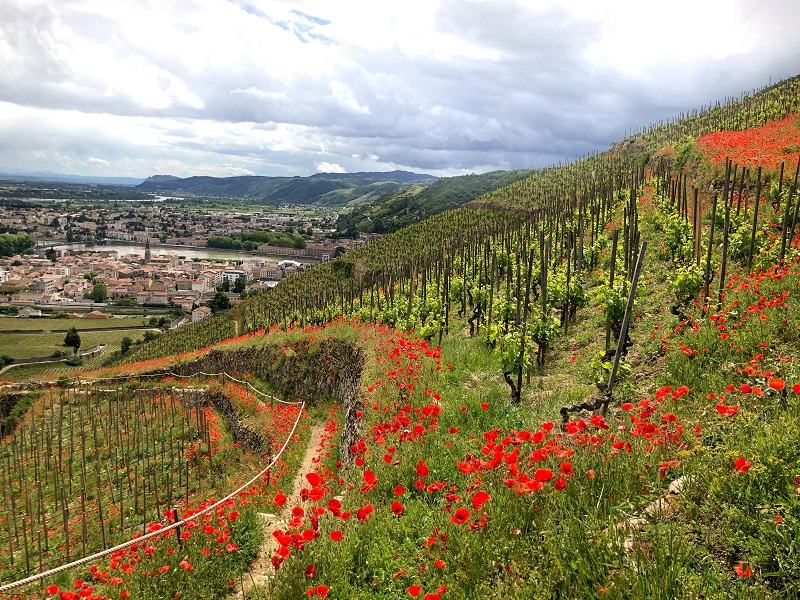
At the end of June, mildew spots start to appear on the Marsannes. We record an additional 100mm of rain. As a result, the Méal hill is as green as it’s been for a long time. In the Southern Rhone Valley, it’s the opposite: it’s almost time to start irrigating... Barely 5mm in June, but as the apexes continue to grow, we’ll sit tight. No cryptogrammic pressure in sight.
In mid-July, brown rot appeared in places and as pressure built up, the affected grapes burst. Then botrytis set in. Water, heat... everything fungi love to lay down their roots. Powdery mildew too. So after treatments, plant infusions, topping, mowing of the plots, leaf removal could begin, sometimes involving backpack spraying in the plains. We stayed agile, picking up the rhythm of past years... typical winegrowers’ years! There could be no giving up: whereas we had almost got used to the protective role of the sun and the heatwave, this year the winegrower’s craft was crucial to seeing the harvest through to completion.
At the end of July, the first bunches of Syrah begin to ripen. At last! But on closer inspection, this looks more like the 2013 vintage and predictably, not at all like that of 2020. The health status, at one point worrying, is stabilising with the good weather and the heat of early August. On Condrieu, the race to mow and top is never-ending. On Crozes, some plots are picked late, regrettably, as the brown rot has left its mark on the grapes. On 31th July, a violent storm bursts, and damage is localised in Mauves. Hermitage once again dodges a weather hazard, L’Ermite watching over her no doubt... But on August 15th, the sky rumbles again. There will be no respite!
The first outbreaks of acid rot were spotted, so we quickly resumed leaf removal without breaking pace. We started sorting the few plots that had been weakened. The season kept up its sustained elusive pace, but we were ready for anything, clear in the knowledge that patience would be required as well as pushing those plots as hard as possible to secure the desired balance in the whites and the phenolics of the Syrahs.
The contrast between the Northern and Southern Rhone Valley is more than pronounced. The arid landscape of the South contrasts with the greener North. The rainfall stats say it all: 700mm in the North and 300mm in the South by the end of the summer.
The Marsannes are taking on their beautiful golden hues, a sure sign that maturity is approaching. The hillsides too, which allow drainage and help maintain remarkable plant health, especially in light of what happened over the season. The plots under the greatest strain have been transformed by this season which feels like something from the past, with the beneficial effect of water and cool temperatures on the plants. The first tastings of the grapes, coupled with the analyses, bring us to mid-September for the 2021 harvest. Not long to wait...
In Châteauneuf-du-Pape, the Syrah and Grenache grapes benefited from an ideal summer climate to continue their maturity without any particular constraints. Here too, the harvest looked like it was going to be late, as a result of the delays suffered in the spring.
Picking crews have to be reorganised to make sure we have the necessary manpower to push the ripening process. The return of the heat in September is good for the morale... and for the grapes. The Syrah skins are slowly maturing. The pips are already turning brown on the Saint-Joseph hillside. On September 13th, we start harvesting on the slopes of Les Murets (De l’Orée), the Marsannes having reached a good balance with promising alkalinity, a sure sign of the best whites.
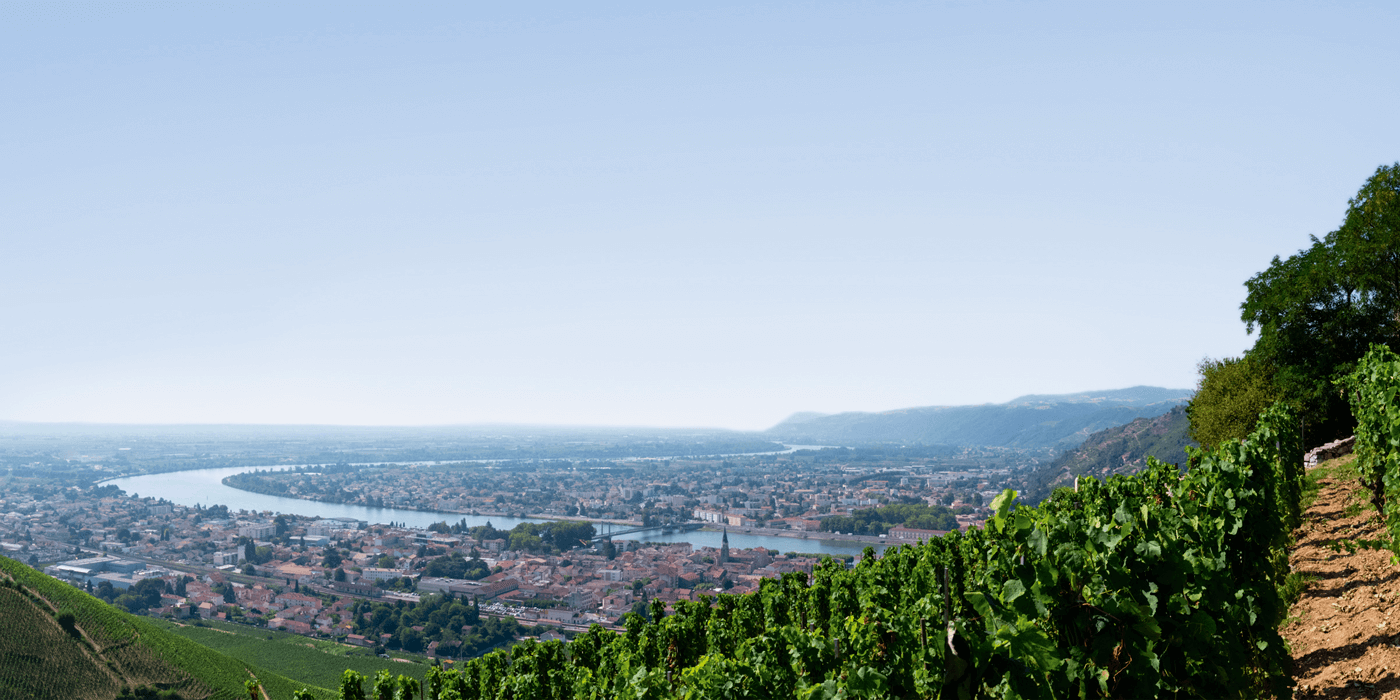
Everything picks up speed... The Syrahs, until then somewhat timid in their growth, start to assert themselves and evolve at great speed, thanks to a southerly wind picking up. On Saturday September 18th, in the glare of an exceptional sunrise, we picked Le Méal whites. While the grapes were being picked slowly but surely, we also started on the reds. The pruning rows we tinkered with at the beginning of the campaign catch up with us: the whites and the reds come ripe for harvest at the same time. The bursting point is our guide: we pick the grapes at the very last moment.
The majestic Le Pavillon is picked on September 24th. The next day, the rumblings of thunder shake the night, a dull noise, lightning, but the rain holds off, unlikely against the din that seems to go on for hours. Impossible to sleep... Tomorrow, the show must go on. Over the next 2 weeks, the harvest accelerates at a steady pace. Sometimes it is necessary to sort the grapes. On Coteau de Chery, the Viognier vines evolve rapidly and the bergamot notes fade away to be superseded by spicy, unusually curry-like aromas, which reflect this particular vintage.
Ampuis didn’t keep us waiting this year and the day before another storm, we started on Neve and Mordorée. Chante-Alouette and L’Ermite seemed to be experiencing this vintage in a different way, as if untouched by what was happening around them: and the bunches are splendid. Unsurprisingly, Chabot – living in its own temporal world – closed the 2021 season on October 7th. October is well underway... and some respite for our winegrowers after this never-ending season, their work allowing us bring a high-Quality harvest into the cellar. The grapes of this 2021 vintage reveal wines with a distinctly northern flavour.
In the cellar, the vintage is already expressing itself through really superb tension and great finesse in the whites. The profile of the reds is more ethereal than in recent years, with a remarkable aromatic complexity and tannin shroud. The good acidity of the Marsanne grapes at harvest time means more frequent malolactic fermentation and stirring. Aging on the lees will nourish the wines and allow them to achieve a beautiful balance and optimal aromatic complexity. The Syrahs, with their typically northern profile, reflect more classic winemaking methods this year, having been set aside in recent sunnier vintages. Pumping has increased over time, as has the frequency of punching. The nose is racy, marked by a peppery, floral character. The mouths are delicate and fresh with silky tannins. The time spent maturing and the use of more Burgundy barrels (228 litres) will make the very most of the product coming into the process.
A year of hardy weather highlights the characteristics of the different Terroirs, for both red and white. Unsurprisingly, the most beautiful hillsides of each appellation were presented in their very best light. Once again, the granitic Terroirs of AOP Hermitage (lieu-dit Ermite, lieu-dit Les Bessards) reign as the undisputed masters of the Northern Rhône. A special mention goes to the Syrahs of the most beautiful slopes of AOP Cornas (lieu-dit Les Côtes) and to AOP Saint-Joseph in the Tournon-sur-Rhône and Mauves sectors (lieu-dit Montagnon, lieu-dit Saint-Joseph, lieu-dit Le Clos). Radiance, finesse and aromatic elegance will remain the guiding themes of this 2021 vintage, hot on the heels of some of its illustrious predecessors, for which perfectly-timed maturity brought elegance and great complexity.


